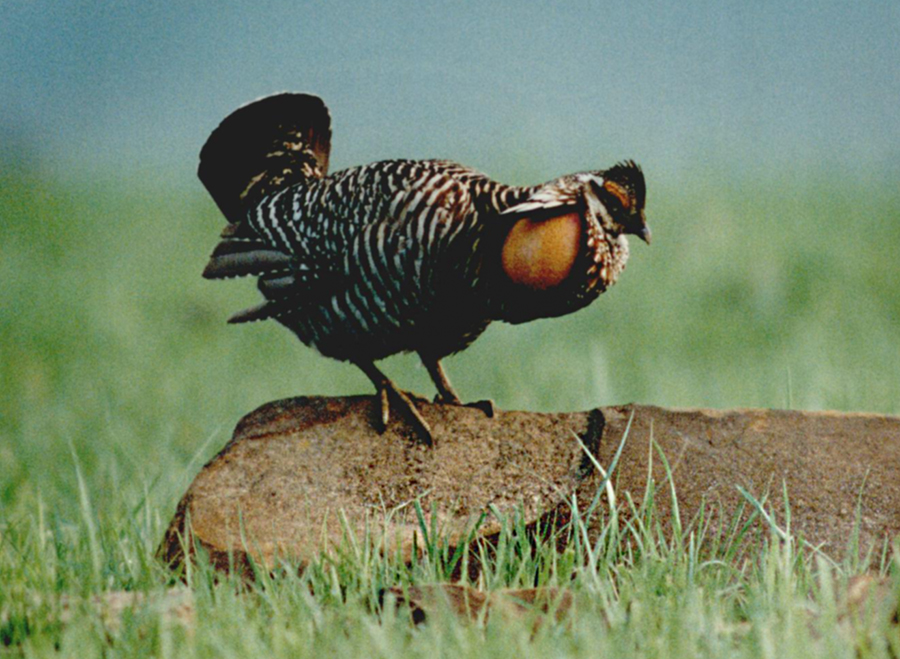
The Encyclopedia of Oklahoma History and Culture
PRAIRIE CHICKENS.
Found historically throughout most of the prairie-dominated Sooner State in such bountiful numbers that their collective wing beats could be heard over great distances, prairie chickens served as a source of sustenance for early pioneers. An important game species sought annually by sportsmen until recent years, the greater prairie chicken (Tympanuchus cupido; GPCH) exists today in north-central and northeastern Oklahoma primarily in tallgrass habitats, and the lesser prairie chicken (Tympanuchus pallidicinctus; LPCH) in sand sage, shinnery oak, and mixed- and shortgrass habitats of western Oklahoma and the Panhandle.
Both are stocky, chicken-like birds with small heads, short, rounded tails, and dramatic courtship rituals, after which Plains Indians patterned their war dances. On average, GPCH males weigh thirty-six ounces and have seventeen-inch lengths and twenty-eight-inch wingspans. Females are slightly smaller. Uniformly barred with dark brown, irregular, horizontal stripes over white-and-buff backgrounds, both sexes have elongated pinnae or "ear" feathers, with those of males being longer. On each side of the neck below the pinnae, males have gular air sacs, naked areas of inflatable skin, the golden color of which matches the fleshy combs above each eye. During spring courtship at traditional booming grounds or "leks," multiple males erect their pinnae and inflate their air sacs while bowing, stamping their feet, and making low, cooing sounds similar to air blown across a bottle top. A female attracted by these displays selects a cock, breeds, and afterwards locates her nest, a grass-lined depression in the soil, usually within a half-mile. There, a dozen off-white eggs will hatch after about twenty-four days of incubation. Chicks stay with the hen for two months or more before dispersing. Diet is vegetation such as leafy forbs, buds, and seeds but during nonwinter months largely consists of insects (especially grasshoppers). Winter flocks feed during early morning and late evening, often eating grain crops, soybeans, or winter wheat, then loafing or later roosting in grasslands.
The lesser prairie chicken is similar to the greater but is about 25 percent smaller. In contrast to GPCH, LPCH males have reddish-pink air sacs and have higher-pitched, bubbling courtship vocalizations. That explains why their leks are called "gobbling grounds."
Ten thousand acres of contiguous, healthy prairie are thought minimum to support a prairie chicken population. Degraded habitat void of forbs, prescribed burning of ill-timed frequencies and at improper seasons, exurban sprawl, and habitat fragmentation are considered responsible for serious declines. Both birds are species of significant concern in Oklahoma and several other states and could disappear completely in the near future. Populations of GPCH have been extirpated or are in danger of extirpation in fifteen states. LPCH have experienced a 97 percent decline in numbers range wide since the 1800s and a 78 percent reduction in occupied range since 1963.






